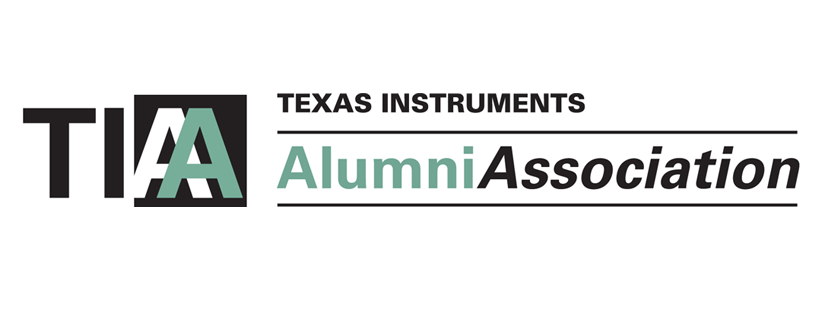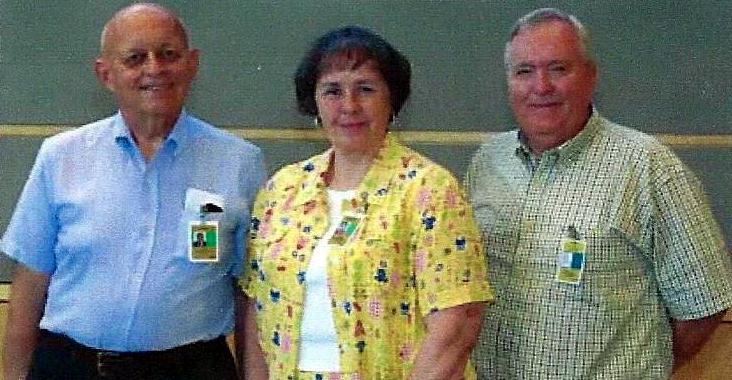Texas Instruments Alumni Association members took pride in five years of accomplishments at the TIAA annual meeting May 19. More than 150 members gathered to elect officers, approve constitution and bylaws changes, get briefed on the current TI business picture, and hear the good news about TIAA progress.
TIAA met at the Dallas Arboretum, formerly the Everette Lee DeGolyer estate. DeGolyer, a legendary oilman, was the silent partner who put up the money to found Geophysical Service Inc. in 1930. GSI was the original company from which Texas Instruments evolved. “Mr. De” willed his estate to the City of Dallas. Today, TIers and the TI Foundation continue to make important contributions to this Dallas jewel.
TIAA elected Ed Hassler as president; Jon Jackson, executive vice president; Sharlene Tucker, secretary, and Ruth Lee, treasurer. The new officers will assume heir responsibilities July 1 and serve one-year terms. Ed, the current executive vice president, will succeed Jerry Brandenburg at the TIAA helm.
Ann Pomykal, TI director of Corporate and Foundation Giving, lauded TIAA for its achievements, commenting, “I salute you for what you have done.” She presented an basket of orchid plants for their greenhouse to Jerry and his wife, Ronnie, also a former TIAA officer. “The Brandenburgs committed so much time to the organization, without asking for anything back,” Ann said.
Members approved TIAA constitution and bylaws amendments to comply with the Texins Association change to 501c(7) tax status. TIAA is among the groups under the Texans Association charter. The TIAA vision is to provide a link between TI and the retiree community that fosters communications, programs and activities about and of interest to TI retirees around the world.
Kevin March, new TI chief financial officer, spoke to retirees following the previous week’s analysts meeting. “The analyst community is excited about the potential of the digital signal processor (DSP) business,” Kevin said. “TI is gaining market share in every segment of the businesses we are in now. This adds to growth and earnings for investors, which is positive for the stock.”
Kevin said the value of electronics is moving more and more into semiconductors. There is more value added on the chip. This is driving changes in the customer relationship, including longer payment terms and consigned inventory. The new DLP™ (digital light processing) generation is coming later this year. In the future, TI will be able to add more colors easily — something the LED (light emitting diode) can’t do.
Instead of TI building all its new manufacturing fabs, the strategy now is to outsource one half and build one half. A new fab can cost $450 million plus up to $2.5 billion for equipment. Cash flow improved with this strategy — from a negative $500 million in 2000 to greater than $2.5 billion in 2003. TI will pay off one-half of its debt this year and should have the strongest balance sheet in the company’s history.
Kevin said TI’s ethical legacy is extremely valuable. It has become expensive to comply with the new Federal requirements, Kevin said, but is easier for TI than many companies. This is because TI has a long-standing emphasis on ethics, including one of the first written ethics booklets. TI also has a written code of conduct, which now is a requirement in the new regulations.
Kevin thanked retirees for their legacy of ethics and commented on the positive role this is playing today in TI’s business. TIAA has 1,700 members.
Jerry Brandenburg introduced the TIAA vice presidents: Dot Adler, Communications; John Byers, Membership and Webmaster of the TIAA Web site, and Jerry Pierce, Ongoing Education.
The TIAA president said membership now totals 1,700 and seems to be stabilized at that number. “We had hoped we could have 300 members by the end of the first year,” said Max Post, who co-chaired the association’s steering committee. “We have exceeded our most optimistic forecast.”
Jerry Brandenburg said, “We’ve been very pleased with the kind of response we’ve gotten and the interest shown in what we are creating. It shows that TI retirees do want to get together frequently and be involved in more activities and education.”

